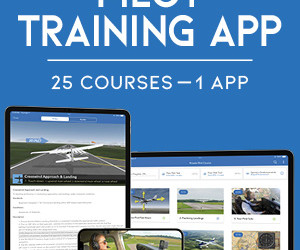Quiz: Airspace classifications and rules
Flight Training Central
MARCH 10, 2025
To segregate military training activities from aircraft operating under instrument flight rules. What is the minimum ceiling and visibility for takeoff, landing, or entering the traffic pattern of an airport in Class E airspace under visual flight rules? Have an operating transponder with altitude reporting.














Let's personalize your content